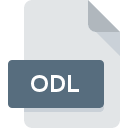.ODL File Extension

Object Description Language File
| Developer | Microsoft |
| Popularity | |
| Category | Developer Files |
| Format | .ODL |
| Cross Platform | Update Soon |
What is an ODL file?
Object Description Language (ODL) files are text files containing structured descriptions of objects, often utilized in software development environments.
These files play a crucial role in defining interfaces and structures for software components, facilitating communication between different programming languages and technologies.
More Information.
Initially conceptualized as a part of the development process for COM-based applications, .ODL files served a dual purpose.
Firstly, they acted as a reference for programmers, offering a clear and concise description of the COM objects and their functionalities.
Secondly, they enabled the automatic generation of code stubs and type libraries, streamlining the development workflow by reducing manual effort and ensuring consistency across projects.
Origin Of This File.
The genesis of .ODL files trace back to the evolution of Microsoft’s Component Object Model (COM).
COM, introduced in the early 1990s, provided a framework for software components to communicate and interact within Windows applications. .ODL files emerged as a means to describe these components’ interfaces and behaviors in a structured manner.
They serve as blueprints for defining objects, their methods, properties, and events, facilitating seamless integration and interoperability within the COM ecosystem.
File Structure Technical Specification.
.ODL file is a textual representation of COM interfaces and type definitions. It adheres to a specific syntax defined by the Object Description Language, which includes keywords, data types, and annotations.
The file structure typically comprises interface declarations, method prototypes, property definitions, constant values, and type declarations.
The syntax of .ODL files are similar to that of the C programming language, employing constructs such as typedef, struct, and enum to define custom data types and structures.
Additionally, .ODL files support attributes and annotations to provide additional metadata about the interfaces and their members, aiding in documentation and code generation.
How to Convert the File?
Converting .ODL files to other formats or representations may be necessary to integrate them with different development environments or toolchains.
One common conversion approach involves using Microsoft’s Interface Definition Language (IDL) Compiler, which can translate .ODL files into corresponding type libraries (.TLB) or header files (.H).
These converted artifacts can then be consumed by compilers and development frameworks that support IDL-based interfaces.
Additionally, various third-party tools and utilities offer conversion capabilities for .ODL files, allowing developers to transform them into alternative formats such as JSON or XML.
These conversions facilitate interoperability with non-Windows platforms and technologies, enabling broader usage of COM components in heterogeneous environments.
Advantages And Disadvantages.
Advantages:
- Interoperability: .ODL files facilitate interoperability between different programming languages and platforms by providing a language-independent way to describe object interfaces.
- Standardization: They adhere to a standardized syntax, making it easier for developers to define and understand the structure of software components.
- Code Generation: .ODL files can be used to generate code stubs and type libraries, streamlining the development process in COM-based environments.
Disadvantages:
- Complexity: Understanding and writing .ODL files require familiarity with the Object Description Language syntax, which can be daunting for beginners.
- Limited Scope: .ODL files are primarily used in COM and DCOM environments, limiting their relevance in modern software development paradigms such as .NET and Java.
How to Open ODL?
Open In Windows
- Microsoft Visual Studio: Microsoft’s integrated development environment (IDE) for Windows provides native support for editing and viewing .ODL files. Simply open the file within Visual Studio to access its contents.
Open In Linux
- Text Editors: Use text editors such as Vim, Emacs, or GNU Nano to open .ODL files on Linux systems. These editors offer syntax highlighting and basic editing functionalities.
- Wine: Install Wine, a compatibility layer for running Windows applications on Linux, and then use Windows-based development tools like Visual Studio to open .ODL files.
Open In MAC
- Text Editors: Similar to Linux, you can use text editors like Atom, Sublime Text, or TextEdit to open .ODL files on macOS. These editors support syntax highlighting and basic editing features.
- Cross-platform IDEs: Install cross-platform IDEs like JetBrains IntelliJ IDEA or Eclipse, and use plugins or extensions for COM development to open and edit .ODL files on macOS.
Open In Android
- Termux: Install the Termux app, a terminal emulator for Android, and then use command-line text editors like Nano or Vim to open and edit .ODL files directly on your Android device.
Open In IOS
- Textastic: Download the Textastic app from the App Store, which is a versatile text editor for iOS. Textastic supports syntax highlighting for various programming languages, including ODL, allowing you to open and edit .ODL files on your iOS device.













